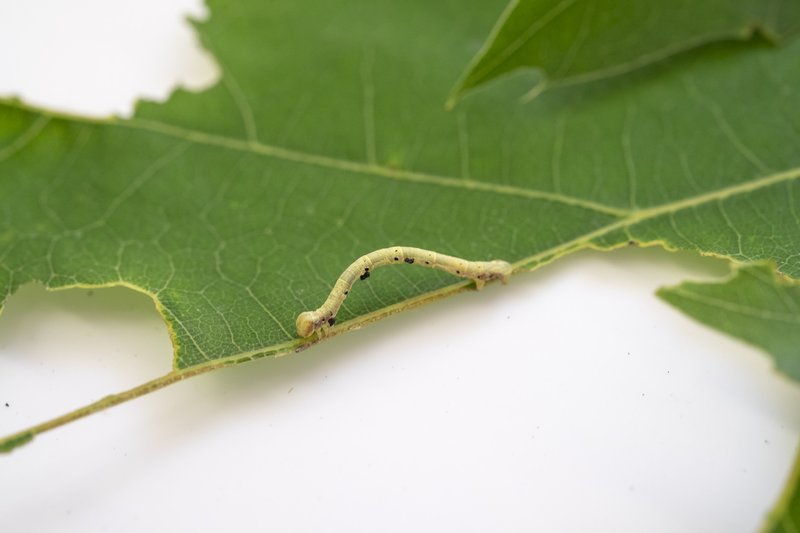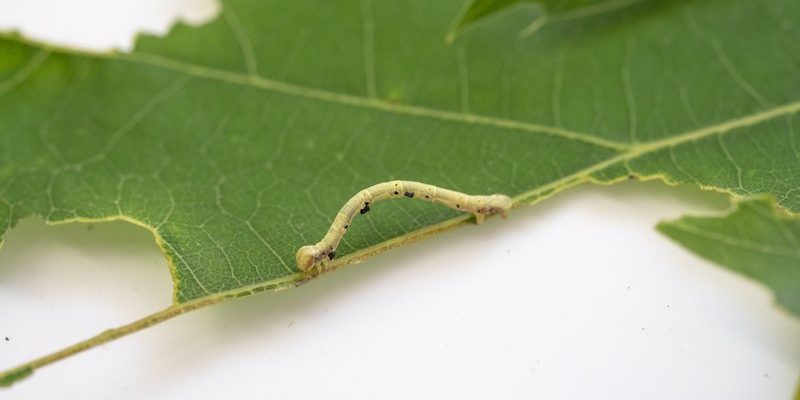
Inchworms are actually the caterpillar stage of various moths, and they tend to thrive in specific environments. They can cause significant damage, especially when populations explode. If you have a beautiful garden or a yard filled with trees, it’s vital to know which ones are most vulnerable to inchworm damage. In this article, we’ll dive deep into understanding these little villains and the trees they love to feast on.
What Are Inchworms?
Before we get into which trees are most susceptible to these pests, it’s good to know a bit about inchworms themselves. Inchworms, or measuring worms, are the larvae of moths from the Geometridae family. Their unique movement resembles measuring the ground, which is how they got their name. Typically, they create a looping motion as they inch along branches and leaves.
Inchworms can vary in color, but they’re often green or brown, allowing them to blend in seamlessly with foliage. This camouflage makes it tough for plants to defend against them. They usually start making their presence known in the spring, just as trees begin to leaf out. As they munch away, they can cause defoliation, which can stress trees and weaken their overall health.
Most inchworms prefer specific trees, leading to a more significant impact on certain species. When they chew through leaves, they can hinder photosynthesis, essential for a tree’s growth and vitality. This is why identifying which trees are vulnerable is crucial to managing their presence effectively.
Trees at High Risk for Inchworm Damage
Various trees attract inchworms more than others. Here are some of the most vulnerable trees you’ll want to keep an eye on:
- Elm Trees: Often a target for inchworms due to their large leaves, which provide a buffet-like experience. The leaves are increasingly appealing to these pests, especially during their early growth stages.
- Ash Trees: These trees are known for their sturdy structure, but their leaves can be particularly enticing for hungry inchworms. A significant infestation can lead to severe leaf loss.
- Maple Trees: With their sweet sap and wide, flat leaves, maples are a favorite for inchworms. The damage can be especially pronounced in young trees.
- Oak Trees: Oaks are large and provide plenty of food for inchworms. However, excessive feeding can weaken the tree over time.
- Apple Trees: Fruit trees like apple trees attract inchworms, as their foliage is delicious to these pests.
Recognizing these trees as prime targets can help you take proactive steps to protect them.
Signs of Inchworm Infestation
How can you tell if inchworms are wreaking havoc on your trees? Look out for several indicators:
1. Defoliation: One of the clearest signs is significant leaf loss. You’ll notice that leaves have been nibbled, often leaving only the vein structure behind.
2. Webbing: Some species of inchworms create silk webs as they move. If you spot fine threads hanging between branches, it could indicate their presence.
3. Caterpillars: Of course, seeing the inchworms themselves is a big clue. If you find these little critters crawling on the branches, it’s time to take action.
4. Fecal Pellets: You might also notice small frass (insect droppings) under infested trees. It looks like tiny black specks and is a sure sign that the inchworms have been munching on your leaves.
Checking for these signs regularly, especially in the spring and early summer, can help you catch infestations before they become too severe.
How to Protect Your Trees From Inchworms
When you know your trees are at risk, there are several strategies you can use to keep inchworms at bay:
- Regular Inspection: Make it a habit to check your trees often. Early detection is key. Look for the signs mentioned above, and act quickly.
- Pest Control Options: If you spot an infestation, you have options. You can use insecticidal soaps or other organic pesticides targeted at inchworms. Just be sure to follow the instructions carefully to protect beneficial insects.
- Encourage Natural Predators: Birds and beneficial insects can help control inchworm populations. Consider planting flowers that attract birds to your yard.
- Pruning: If you find heavily infested branches, prune them away. This not only removes the pests but also helps your trees recover from damage.
Taking these steps can greatly reduce the likelihood of your trees falling prey to inchworm damage.
When to Seek Professional Help
Sometimes, despite your best efforts, inchworm populations can spiral out of control. If you’re facing a severe infestation, it might be time to call in the professionals. Here’s when to consider this option:
– If you notice widespread defoliation across multiple trees.
– When you’re unsure about what type of pest you’re dealing with, a pest control expert can help identify the issue.
– If the infestation returns every year despite your best efforts, professionals can recommend long-term solutions.
Remember, dealing with pests can be tricky, but getting the right help can save your trees from irreversible damage.
Can Inchworm Damage Be Reversed?
If you find your trees suffering from inchworm damage, there’s good news: they can often bounce back! Here are some ways to help them recover:
1. Keep Them Healthy: Ensure your trees get the nutrients they need. Consider a balanced fertilizer to promote healthy growth.
2. Watering: Proper watering is vital, especially during dry spells. Deep watering encourages strong root development and overall resilience.
3. Pruning Damaged Leaves: Don’t hesitate to trim away leaves that have been severely damaged. This helps focus the tree’s energy on healthy growth.
4. Monitoring: Continue to keep an eye on your trees for any signs of returning inchworms. Early intervention can make a big difference.
With a little time and care, your trees can recover from inchworm damage and thrive once again.
Final Thoughts
Inchworms might seem small, but they can wreak significant havoc on vulnerable trees. By understanding which trees are most at risk, recognizing signs of damage, and knowing how to take preventative measures, you can protect your beloved plants.
Honestly, taking the time to care for your trees not only enhances your outdoor space but also contributes to the local ecosystem. So grab a cup of coffee, step outside, and check on your trees. With a little attention, your landscape can remain beautiful and inchworm-free!

